The Lost Shades
‘I wanted my children to see the place where Kim happened’
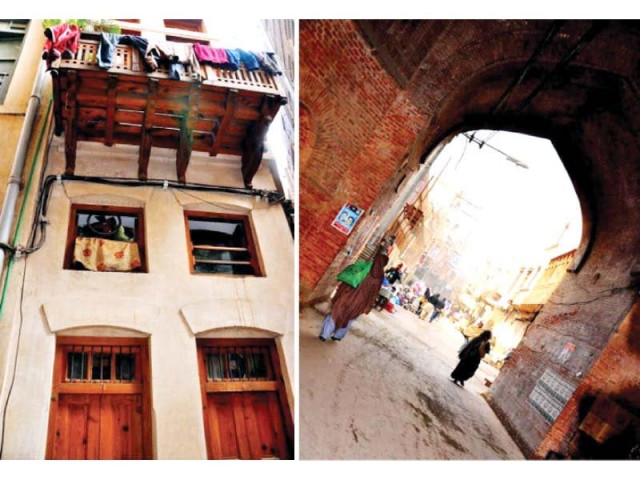
‘I wanted my children to see the place where Kim happened’.
It was ten in the morning. The sun had barely managed to overcome the cloudy December skies of Lahore. I was trying to appreciate the intricate carvings on a wooden front entrance of a house when suddenly the door creaked opened with an eerie groan. A man covered in a rusty, clay-coloured dhussa (shawl) failing to conceal his unkempt clothes emerged. I stepped back in an attempt to reassure him that I was not an impolite intruder. I expected some annoyance but what greeted me was a generous smile, a noble gesture that softened the stern lines that time had created on his face.
“Andar aa jao baoo ji. Cha sha piyo. Nashta karo. Munda hor kulchay lai aanda ai”
(“Come inside Sir, for some tea and snacks. I will send someone for more kulchas (fermented bread).”)
The gentleman exchanged handshakes with the male members in our group and ushered us on to his home inside.
“Bari mehebani! Allah bohta daiway. Fair sahi. Tusi Bismillah karo”
(“Thank you. God bless you. Will do some other time. You go ahead please.”)
 Photo by author
Photo by authorI responded with gratitude while attempting to shush a keen little member of our group, my pre-teen daughter.
“Mom, I am hungry. Let’s just take his offer and have those kulchas. Is that like a naan? Or is it more like those yummy parathas dadi makes”
“Ssh! Zuzu. You had breakfast. And I make parathas too!” The daughter-in-law in me objected.
“Yeah! But not what he is offering! And your parathas are…. different.”
While little one was obviously all for the good food while her older brother, more accustomed to the long good byes and forceful affections of the desi kind, was attempting to grasp the concept of permitting strangers into your house to eat.
We heard the Baba ji, as we remember him affectionately, insisting:
“Na ji ais tarah nahin jaan dainday asi. Meri ghar wali pishlay saal guzar gayee. Hun mein tay mera puttar rehnday aan ithay”
(“Please no! We won’t let you go like this. My wife passed away last year. Now it is me and my son who live here.”)
As my husband engaged him in a conversation, my son asked our tour guide if he knew the man personally. I hoped in my heart that his brief reply was explicit for him:
“No more than he knows that we are here to see his androon shehr (inner city)”
I was suddenly gripped by the strange sense of not belonging to that place. I intended to tell him that we were not tourists and that the guide was there to make certain that my American-born children acquire an accurate account of history on the tour. I wanted him to know that we were from Lahore, but I could not. Instead, I decided to listen to him. He spoke with an ease of sincerity on his face on which time had imprinted some lines of toil. Listening to his conversation was like hearing a narration of ages. I always liked stories. Who would not, when you grow up reading Cinderella, Snow White and the Seven Dwarfs and the Arabian Nights? Sometimes you wait to be magically transported to another realm, you yearn to see an enchanted world where everything is as it is told in the story books, where there are towns that have houses with doors always open to strangers, cities that are surrounded by walls and guarded by gates, streets where pavements tell tales of the travellers who walked on them. There is a place like this in every city.
For those who know Punjabi folk lore and the relatively young and suave who grew up listening to Hadiqa Kiyani’s Boohay Baarian, let me tell you that for me that fantasy exists in the walled, inner city of Lahore.
Dal- dassan shehr Lahore andar, lakkhan buhay tay lakkhan baarian nay
Tay jinnan ittan tay aashiqan nay pair dharay, ohi tutiyan tay baqi sarian nay
(“Say I that in the city of Lahore, there are countless doors and windows that long
And bricks that lovers have stepped upon are the ones that are broken and the rest are strong.”)
While you are apt to picture the inner city Lahore as a robust, loud aggregate of constructions, I have always found it filled with a disorder that has a hint of calm and solitude. I come across street vendors, children playing in the middle of the road, the young and the old, their faces filled with verve and their eyes eager to tell you the tales of their lives. These people are not affluent, but giving, not frugal but content, they have not known any opulent indulgences but are eager to share what they have. I wanted to listen to them and sense their stories. So I embarked upon this walk with my friends and family, including my two children to show them our heritage. It was a mere three kilometers from Delhi Gate (Dilli Darwaza) to the Lahore Fort (Shahi Qila) that would set us to descend into the romance of winding streets leading to the Shahi Hammam, Masjid Wazir Khan, Shah Sauf’s Mazar, Sunehri Masjid, Kasera Bazaar, Pani Wala Talaab, Heera Mandi, and Hazuri Bagh. Not to mention, for a Lahori, it had to end on food street and a trip to Cooco’s Den with a rooftop view of the Badshahi Masjid.
 Photo by author
Photo by authorBefore I could no longer tear myself from the enthusiasm, I paused to take a look at the shops around. Catching my eye was a splendid array of brightly coloured bags of spices, dried fruits and grains, neatly stacked under the awning of a nearby shop. My camera was able to capture the pride in the eyes of the shopkeeper. I shifted my gaze from these colours to the vanishing hues eclipsing the bricks of the Delhi Gate. As we ventured through its columns, the Bollywood freak in me was reminded of a song from Delhi 6.
The song, obviously is on Delhi:
Is kay bayain taraf bhi dil hai
Is kay dayain taraf bhi dil hai
Yeh shehr nahin mehfil hai
[With a heart on its left and a heart on its right
A city it is not, but a party in sight!]
Delhi Gate was built by the Mughal Emperor Akbar in the 16th century. It was the gate that led to the only road from Lahore to Delhi, the capital of Mughal Dynasty. It witnessed the ominous riots of 1947, which separated the two cities, stole away the two mehfils. The gate was restored again, though probably not to its original glory. Even with the unsightly, tattered flyers and posters pasted upon, it stood magnificent, welcoming us to our travels through time. I could see the glimpse of Androon Lahore through the arch of Delhi gate. I could already sense the allure of history. I was able to appreciate the brick alleys, the jharokas of the terraces, the three- to five- storey houses, now tainted by the rude placement of electricity poles and the snarled mesh of wires dangling from them, balconies decked with ornate woodwork, restored without much aesthetic artistry but to meet the basic requisite.
 Photo by author
Photo by authorThough a faint picture of its glorious past, these details of the Walled City of Lahore become visible to the onlooker like a broken spell of the centuries gone by. I looked forward to seeing it all one more time. This time, I wanted my children to learn the history by listening to the stories of those who live there. I sought them to understand what it was about the five years spent in Lahore that inspired a teen aged Rudyard Kipling to write his greatest stories?
I wanted them to see the place where Kim happened.
“This is a brief life, but in its brevity it offers us some splendid moments, some meaningful adventures.”
-Rudyard Kipling, Kim
F Shereen, MD, is a Missouri-based physician, currently living and practicing rheumatology in the USA. She tweets as @FShirinMD
Published in The Express Tribune, February 7th, 2016.

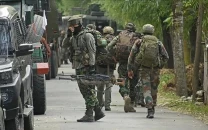


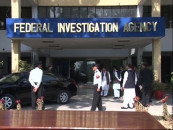
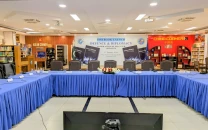
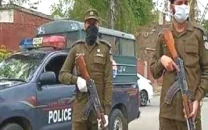












COMMENTS
Comments are moderated and generally will be posted if they are on-topic and not abusive.
For more information, please see our Comments FAQ